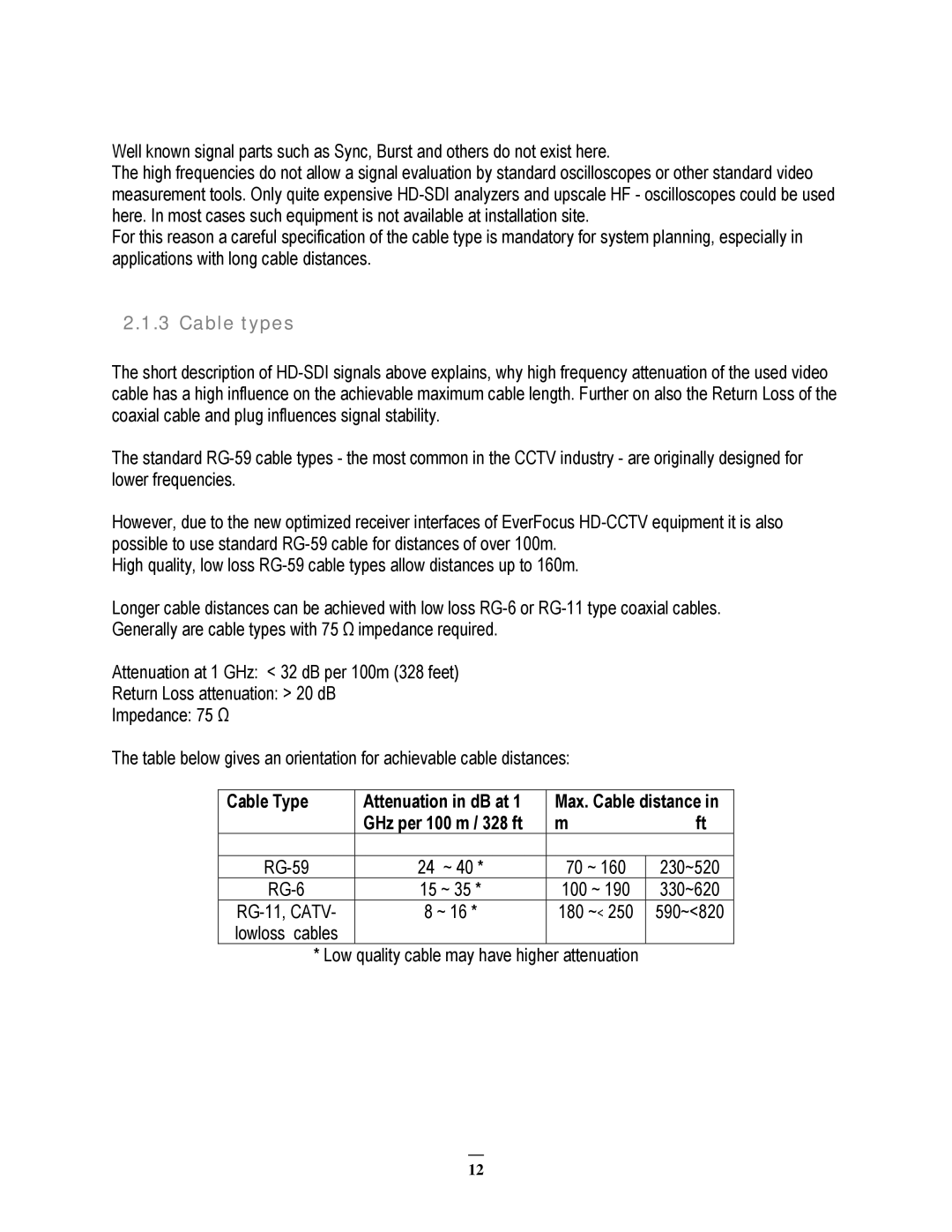Well known signal parts such as Sync, Burst and others do not exist here.
The high frequencies do not allow a signal evaluation by standard oscilloscopes or other standard video measurement tools. Only quite expensive
For this reason a careful specification of the cable type is mandatory for system planning, especially in applications with long cable distances.
2.1.3 Cable types
The short description of
The standard
However, due to the new optimized receiver interfaces of EverFocus
High quality, low loss
Longer cable distances can be achieved with low loss
Attenuation at 1 GHz: < 32 dB per 100m (328 feet)
Return Loss attenuation: > 20 dB
Impedance: 75 Ω
The table below gives an orientation for achievable cable distances:
Cable Type | Attenuation in dB at 1 | Max. Cable distance in | |
| GHz per 100 m / 328 ft | m | ft |
|
|
|
|
24 ~ 40 * | 70 ~ 160 | 230~520 | |
15 ~ 35 * | 100 ~ 190 | 330~620 | |
8 ~ 16 * | 180 ~< 250 | 590~<820 | |
lowloss cables |
|
|
|
* Low | quality cable may have higher attenuation |
| |
12
